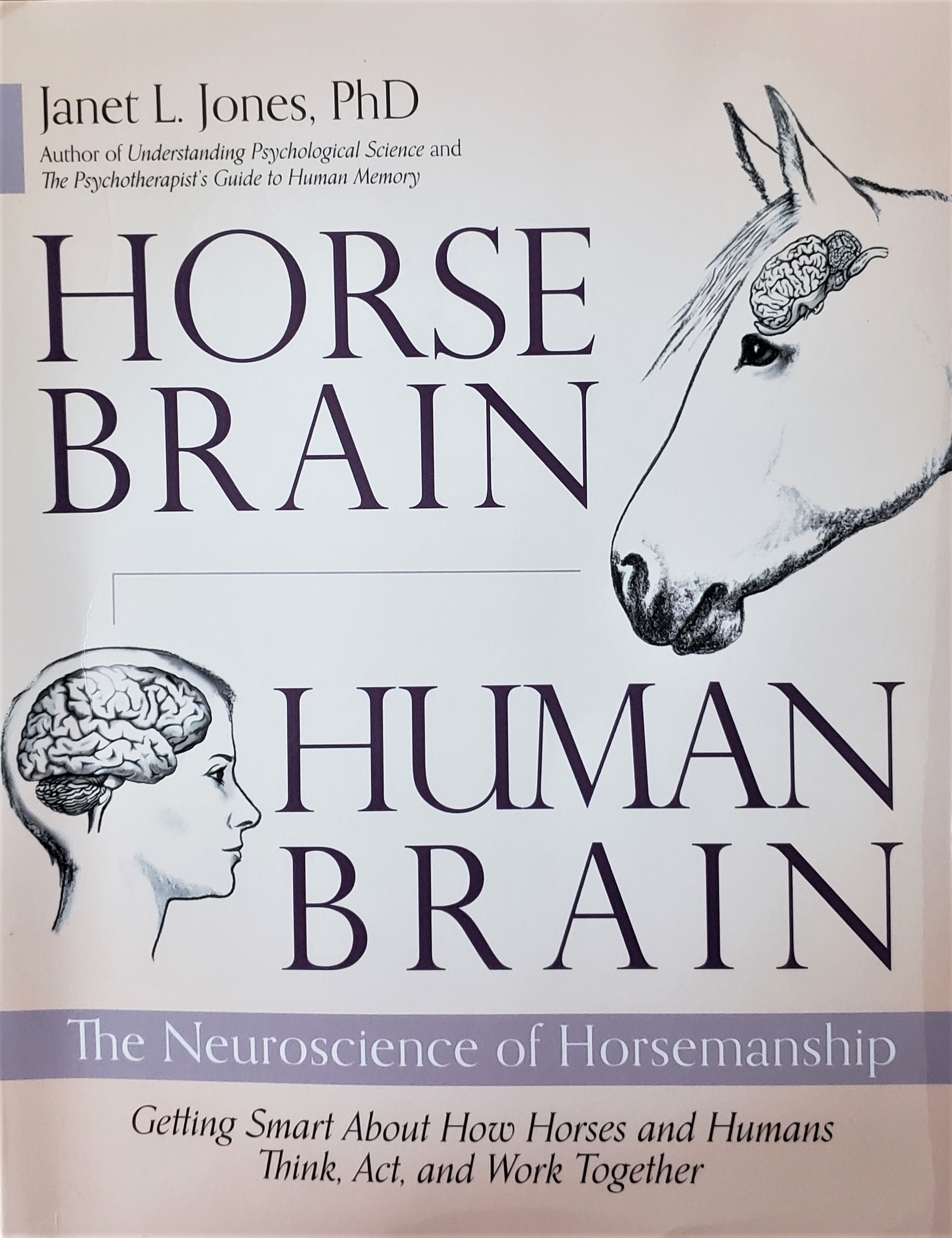It is winter. The arena windows and doors are closed. There cannot be any dangers getting in from outside so why does my horse spook? I don’t see anything that could have spooked him. Herein lies the difference between the horse brain and the human brain. My human brain knows everything it closed up tight. I am not even thinking about what is outside. But my horse, a prey animal , has been robbed of some of his critical and life saving senses. He can hear sounds outside but he cannot see what is making those sounds. He is now existing in a heightened sense of alertness. This is how horses have survived for millennia. Here is a quote form Janet L. Jones book Horse Brain Human Brain.
Horses and people have been working together , or trying to, for at least 5500 years……. Today horses are an estimated 60 million strong worldwide. The American Horse Council Foundation reposts that our four- legged friends pack a financial punch of $122 billion a year and create almost 2 million full-time jobs in the United States alone. About 27 million Americans ride. That’s a lot of cross-species pairs trying to work with each other.
Janet. L. Jones
This book looks at the differences between horse and human brains and how they function. It explores horse vision, hearing, smell and taste . Here are two interesting illustrations from the book .


The stimulus driven brain of the horse is not made for long marathons of goal-driven human expectation. So a day of clipping , grooming , braiding and then loading onto the trailer for a trip of more than an hour to a horse show may be too much for the horse brain to deal with. How could we break up the day to have a more relaxed and happy horse at the show ?
The book goes on to examine the process of training horses and what problems we may find if we do not understand how the horse’s brain functions. Do we go toward negative reinforcement or reward training? The one sensory communication that is direct is proprioception. This is the body awareness that tells us where our bodies and body parts are at any given time. It also tells us where our horse’s legs are, how their backs feel. The horse also , by proprioception, can tell where our legs are and what they are doing. This is how we can communicate what we want the horse to do. According to Janet Jones we humans can improve our proprioception and this will enable us to give clearer aids to our horses. She has several exercises in the book to help us improve our proprioception.
We all know that horses live in the present moment and do not concern themselves with the past or what is happening at the end of the week or next month. We humans have a group of brain cells just above our eyes that deal with planning, organizing, evaluating, goal setting and arranging a plan to achieve those goals. This area of the brain is the prefrontal cortex. Human prefrontal cortex does not fully develop until age 25. In horses it never develops as horses do not have a prefrontal cortex. This means they are not in their stalls thinking of ways to thwart your goal of competing at the Prix St. George this summer. They have no idea that is your goal. If you can be clear and consistent in your training requests and give praise for tasks accomplished well you may realize that goal. If you are not clear or are too overbearing in how you train the new tasks then you may not achieve the goal. Your horse does not know your goal and is not setting out to upset you. He is not capable of that kind of thinking.
I found this book very interesting and certainly shed light on my relationship with my horse Biasini. It helped me to understand his point of view much better. In some places the book was too academic for my little brain. Diagrams of neurons, axon terminals and dendrites did not help me understand the electrical connections of the brain any better. But for some people this may be a valuable add on to this book.
I would like to close with a poem by Ronald Duncan which is featured in the book.
The Horse
Where in this world can man find nobility without pride,
friendship without envy, or
beauty without vanity.
Here, where grace is laced with muscle and
strength by gentleness confined.
Ronald Duncan (C) Ronald Duncan Estate
I enjoyed the book and found Janet Jones information well researched. She earned her doctorate in Cognitive Science from UCLA and has spent much of her life training horses and teaching people to ride. She has competed in Hunter, Jumper, Halter, Reining and Western Pleasure. If you are a horse person I would recommend this book as it will help you understand your horse much better and that is what we all want isn’t it?

Leave a Reply